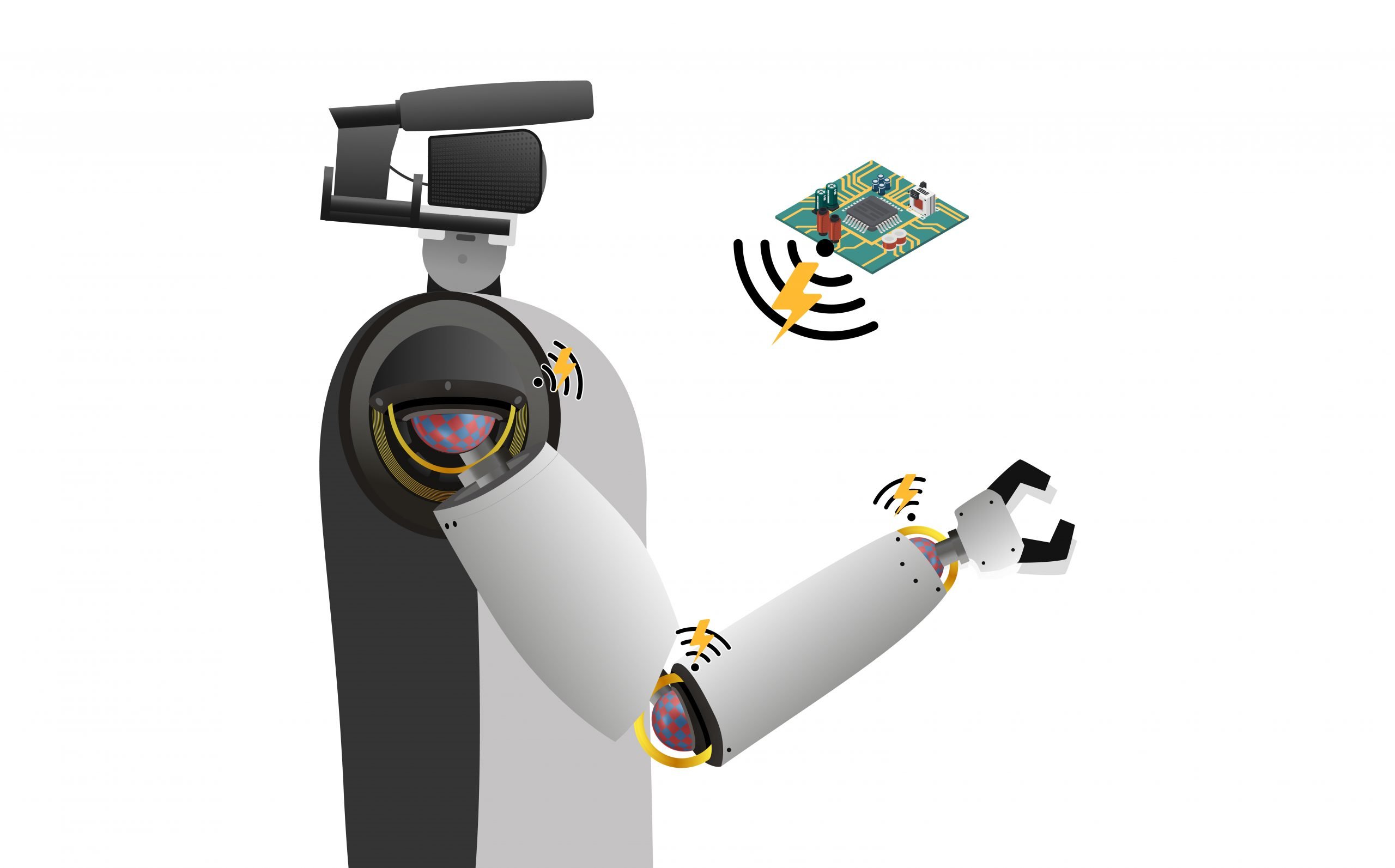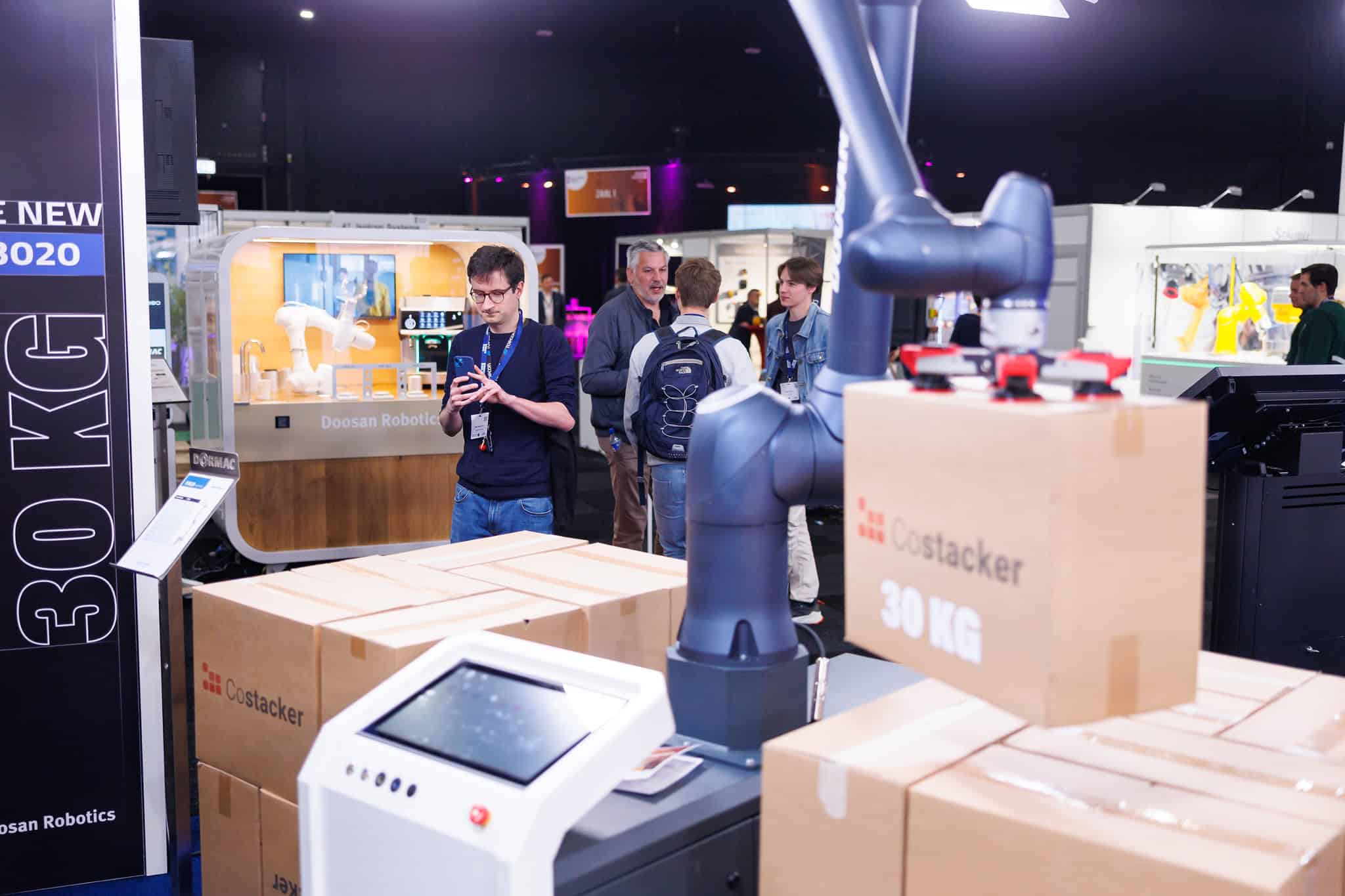
How will robots change the world? A frequently asked and as yet unanswered question. After all, we do not have a crystal ball. What we do know is that digitalization and automation have changed the world enormously in recent decades. At Eindhoven University of Technology (TU/e) in the Netherlands, the potential of smart machines in industry and daily life is being researched each and every day. Scientists immerse themselves in technology and student teams get to work on concrete solutions to social problems. This series will tell you about the latest robots, their background, and their future. Today’s final episode: electromagnetic propulsion.
A large, clunky biscuit tin that is largely made up of cogs and wheels so it can move. That’s the old image of a robot. In the meantime, we have long since passed that stage. Scientists are now developing very precise surgical robots, smart packing machines for factories, and autonomous satellites for use in space. Robots work under special conditions that are often impossible for humans. In that case, we won’t get far with those old-fashioned gearboxes. The most advanced technology is needed for these new robots. Researchers from the Faculty of Electrical Engineering at the Eindhoven University of Technology (TU/e) are coming up with more accurate and efficient replacements for gearboxes, e,g. an electromagnetic drivetrain, one of the most important electromechanical components of robots.
Arm prosthesis
Take, for example, an arm prosthesis. If the joints consist of vast systems of linked gearboxes, the arm does not move the way you want it to. “The gears move too heavily and too slowly. That’s how they hamper any freedom of movement,” says Dave Krop, assistant professor at the research group Electromechanics and Power Electronics at TU/e. “What’s more, a lot of maintenance is required because that motion causes friction between the gearboxes.”

Invisible force
That’s why the researchers are now looking at a propulsion system based on electromagnetic fields. “It’s actually an invisible force,” says Krop. “The parts, for example, the shoulder joint and the arm, do not physically touch each other, but instead are connected to each other by means of the magnetic field. This way the arm can move more supplely, faster, and more accurately than with gearboxes.” The electromagnetic drive also ensures that the arm can move in all conceivable directions. That’s a lot more difficult with gearboxes.”

Wireless motion
Every moving part of a machine or robot uses a certain drive, also called an actuator. But how exactly does such an electromagnetic drive work?” In fact, this kind of drive is a very small, special motor,” says Elena Lomonova, professor and head of the Electromechanics and Power Electronics research group at TU/e. “An internal combustion engine runs on fuel and this propulsion system operates on electromagnetic fields that are activated by electricity.
Krop: “We channel power through the device. That current is always accompanied by a magnetic field. So, by controlling the current, there is some interaction between the magnetic fields.” That ultimately makes it move the way it should. No cables are needed for this. “That gives the robot more freedom of movement,” Krop adds.
Correcting deviations
A control system is needed to make the right series of movements. “A magnetic system is by nature unstable. We have to continuously correct this with a control system so that the system stabilizes and stays in balance,” Krop explains. He compares it to balancing a ball on the tip of your finger. In theory, everything should be perfectly balanced. In practice, you soon have a slight distortion that causes the ball to fall off. “The control system immediately makes sure that all small deviations are corrected,” he says. In an actuator, the role of the finger is performed by the electromagnetic field.
Several types of drives are being worked on within the research group that Lomonova and Krop are part of. “You see these types of actuators all around you,” says Krop. “For example, they control the wipers in your car and make your phone vibrate. The new electromagnetic drives can make a difference in a number of areas in the future. For instance, in medical applications that must work very precisely, or in the automotive industry. As such, this technology is helping to develop electromotors that can be integrated into the wheels of a car.
Precision motion
It is still difficult to tell what the impact of these new drives will be on society and the economy, the researchers point out. “These drives can be used in a wide range of robots and machines. Better machines, on the other hand, will lead to more efficient production. This enables companies to save money and use energy in a more efficient way,” explains Krop. In the meantime, however, a lot of research is still needed. “We are still encountering several practical problems,” he continues. “If we keep on electrifying, then we will use more batteries. But at the moment, they are still detrimental to the environment. On top of that, there is a limited amount of copper available, despite the fact that we need a relatively large amount of it for these developments.”
Hyperloop
Lomonova states that over the coming period the researchers will look more closely at putting this promising technology into practice in everyday life. “For example, we are currently researching its use in Hyperloop trains,” she says. The advantage of this system is that the parts don’t touch each other. This means that less maintenance is required and higher speeds can be achieved. The accuracy of the system also comes in handy in these high-speed trains. That way, an almost invisible device contributes to the development of the fastest train in the world.
Are you curious about the other special robots at the TU/e High Tech System Center? Read the previous episodes here.








